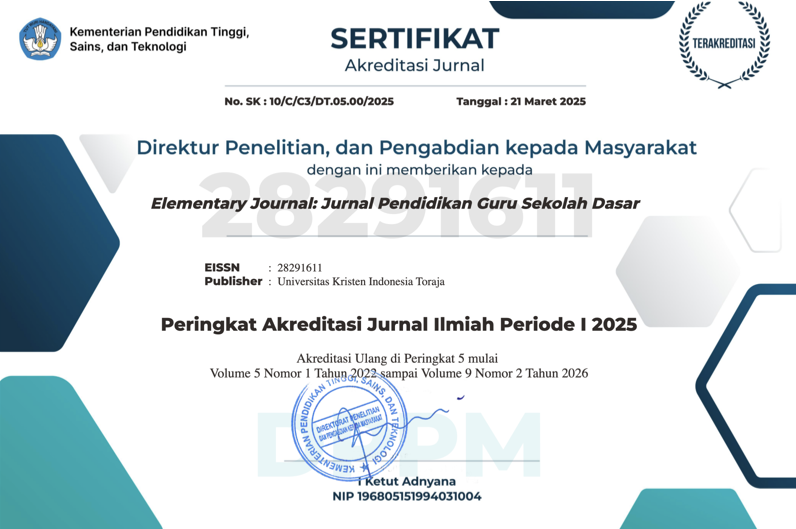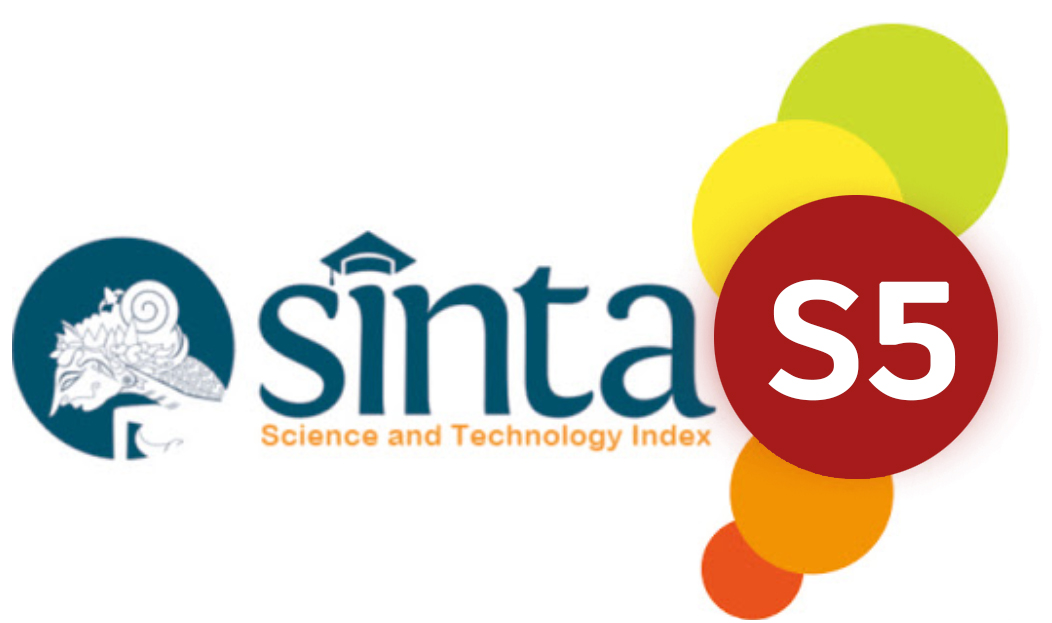Tren Penggunaan Teknologi dalam Pembelajaran Numerasi Di Sekolah Dasar: Analisis Bibliometrik
DOI:
https://doi.org/10.47178/hjncz940Keywords:
Analysis bibliomterix , numerasi , sekolah dasar, teknologiAbstract
Penelitian ini bertujuan untuk menganalisis tren publikasi terkait penggunaan teknologi dalam pembelajaran numerasi di sekolah dasar dalam kurun waktu 2014 hingga 2024. Metode yang digunakan dalam penelitian ini adalah analisis bibliometrik dengan memetakan data publikasi yang terindeks di database Scopus. Hasil analisis menunjukkan bahwa jumlah publikasi terkait topik ini mengalami peningkatan dengan puncaknya terjadi pada tahun 2022. Penulis yang paling produktif dalam bidang ini antara lain Amir MF, Canbazo?lu HB, dan Tarim K, sedangkan institusi yang sering muncul adalah Federal University of Alagoas dan University of Oregon. Negara yang memberikan kontribusi terbesar dalam publikasi ini adalah Indonesia, diikuti oleh USA dan Malaysia. Kata kunci yang sering digunakan dalam publikasi adalah “numeracy,” “mathematical literacy,” dan “primary school,” yang mencerminkan fokus pada pengembangan keterampilan matematika dasar menggunakan teknologi. Penelitian ini memberikan wawasan mengenai arah perkembangan penelitian dan pentingnya teknologi dalam meningkatkan pembelajaran numerasi di sekolah dasar.
References
Ali, S. R. (2017). Numeracy Culture among Primary School Pupil. Communications on Applied Electronics, 7(9), 1–7. https://doi.org/10.5120/cae2017652636
Aristovnik, A., Karampelas, K., Umek, L., & Ravšelj, D. (2023). Impact of the COVID-19 pandemic on online learning in higher education: a bibliometric analysis. Frontiers in Education, 8. https://doi.org/10.3389/feduc.2023.1225834
Aubrey, C., Godfrey, R., & Dahl, S. (2006). Early mathematics development and later achievement: Further evidence. Mathematics Education Research Journal, 18(1), 27–46. https://doi.org/10.1007/BF03217428
Bagacina, E. B., Kilag, O. K. T., Andrin, G. R., Vidal, E. E., Ondog, J. D., & Lopez, S. M. (2024). Digital Transformation in Numeracy Education: A Study on Teaching, Learning, and Leadership Perspective. Exellencia: International Multidiciplinary Journal of Education, 2(1).
Csapó, B., & Molnár, G. (2019). Online Diagnostic Assessment in Support of Personalized Teaching and Learning: The eDia System. Frontiers in Psychology, 10. https://doi.org/10.3389/fpsyg.2019.01522
Dorris, C., Winter, K., O’Hare, L., & Lwoga, E. T. (2024). Mobile device use in the primary school classroom and impact on pupil literacy and numeracy attainment: A systematic review. Campbell Systematic Reviews, 20(2). https://doi.org/10.1002/cl2.1417
Geiger, V., Goos, M., & Dole, S. (2015). The Role of Digital Technologies in Numeracy Teaching and Learning. International Journal of Science and Mathematics Education, 13(5), 1115–1137. https://doi.org/10.1007/s10763-014-9530-4
Goudarzi, E., Hasanvand, S., Raoufi, S., & Amini, M. (2023). The sudden transition to online learning: Teachers’ experiences of teaching during the COVID-19 pandemic. PLOS ONE, 18(11), e0287520. https://doi.org/10.1371/journal.pone.0287520
Hoang, Q. M. (2024). Collaborative Efforts in Science and Technology Within Higher Education Institutions Insights and Reflections. International Journal of Application on Economics and Business, 2(2), 3793–3800. https://doi.org/10.24912/ijaeb.v2i2.3793-3800
Hoogland, K. (2023). The changing nature of basic skills in numeracy. Frontiers in Education, 8. https://doi.org/10.3389/feduc.2023.1293754
Igcasama, R. M., Kilag, O. K. T., & Cabonilas, L. M. (2023). Enhancing Numeracy: A Technological Approach to Improve Basic Math Skills. Exellencia: International Multidiciplinary Journal of Education, 1(6).
Kaiser, G., & Willander, T. (2005). Development of mathematical literacy: results of an empirical study. Teaching Mathematics and Its Applications: An International Journal of the IMA, 24(2–3), 48–60. https://doi.org/10.1093/teamat/hri016
Li, Q., & Ma, X. (2010). A Meta-analysis of the Effects of Computer Technology on School Students’ Mathematics Learning. Educational Psychology Review, 22(3), 215–243. https://doi.org/10.1007/s10648-010-9125-8
Magfirah, I., Andong, A., & Kawi, K. (2023). Analisis Kesulitan Belajar Matematika Di Masa Pandemi Covid-19 Siswa Kelas VII SMP Negeri 11 Buru. Elementary Journal : Jurnal Pendidikan Guru Sekolah Dasar, 6(1), 11–20. https://doi.org/10.47178/elementary.v6i1.2033
McMahon. (2001). Numeracy Intervention: Is It Working in Primary Schools?
Miller, T. (2018). Developing numeracy skills using interactive technology in a play-based learning environment. International Journal of STEM Education, 5(1), 39. https://doi.org/10.1186/s40594-018-0135-2
Mona, H., & Widodo, A. (2022). Berbagai Kendala Dalam Pembelajaran Daring Selama Pandemi Covid-19. Elementary Journal : Jurnal Pendidikan Guru Sekolah Dasar, 5(1), 1–11. https://doi.org/10.47178/elementary.v5i1.1497
Mumayizah, M., Hamidah, N., Thenaya, P. F., & Wijayanti, M. D. (2023). Penguatan Literasi dan Numerasi Menggunakan Adaptasi Teknologi dalam Pembelajaran di SD oleh Kampus Mengajar Angkatan 6. Social, Humanities, and Educational Studies (SHES): Conference Series, 6(3). https://doi.org/10.20961/shes.v6i3.82366
NCTM. (2000). Principles and standards for school mathematics. Reston, VA: The National Council of Teachers Mathematics, Inc.
Okoye, K., Rodriguez-Tort, J. A., Escamilla, J., & Hosseini, S. (2021). Technology-mediated teaching and learning process: A conceptual study of educators’ response amidst the Covid-19 pandemic. Education and Information Technologies, 26(6), 7225–7257. https://doi.org/10.1007/s10639-021-10527-x
Olateju Temitope Akintayo, Chima Abimbola Eden, Oyebola Olusola Ayeni, & Nneamaka Chisom Onyebuchi. (2024). Evaluating the impact of educational technology on learning outcomes in the higher education sector: A systematic review. Open Access Research Journal of Multidisciplinary Studies, 7(2), 052–072. https://doi.org/10.53022/oarjms.2024.7.2.0026
Reyna, V. F., & Brainerd, C. J. (2007). The importance of mathematics in health and human judgment: Numeracy, risk communication, and medical decision making. Learning and Individual Differences, 17(2), 147–159. https://doi.org/10.1016/j.lindif.2007.03.010
Sian, T., Hoon, P., Singh, N. A., Alias, R. A., & Yahaya. (2015). Acquisition of Numeracy Knowledge through a Computer Game.
Susie Groves, Mousley, J. A., & Forgasz, H. (2006). A primary numeracy : a mapping review and analysis of Australian research in numeracy learning at the primary school level : report.
Tahir, N. A., Norman, H., Nordin, N., Wahid, F. N., & Aziz, R. (2023). Requirement Analysis and Expectations of Learning Numeration Problem Solving Use Technology for Primary Education Children. World Journal of Social Science, 10(1), 1. https://doi.org/10.5430/wjss.v10n1p1
Tangkearung, S. S., Panggalo, I. S., & Bauung, E. (2023). Penerapan Media Pembelajaran Audio Visual Dalam Upaya Meningkatkan Keaktifan Siswa Di Kelas III SDN 4 Rantepao. Elementary Journal : Jurnal Pendidikan Guru Sekolah Dasar, 6(1), 21–28. https://doi.org/10.47178/cx5pbh97
Tulak, T., Tangkearung, S. S., Tulak, H., & Paseno, E. W. (2024). Application of Meaningful Learning Model to Improve Student’s Learning Outcomes (pp. 664–675). https://doi.org/10.2991/978-2-38476-108-1_66
Widodo, A., Nursaptini, N., Novitasari, S., Sutisna, D., & Umar, U. (2020). From face-to-face learning to web base learning: How are student readiness? Premiere Educandum : Jurnal Pendidikan Dasar Dan Pembelajaran, 10(2), 149. https://doi.org/10.25273/pe.v10i2.6801
Widodo, A., & Umar, U. (2022). Apakah Learning Loss Berpengaruh Terhadap Kemampuan Numerasi Siswa? Js (Jurnal Sekolah), 6(2), 1. https://doi.org/10.24114/js.v6i2.33371
Zualkernan, I. A., & Karim, A. (2016). Using Learning Technologies to Enhance Numeracy Competence in Rural Public Schools (pp. 253–276). https://doi.org/10.1007/978-981-10-0373-8_13










